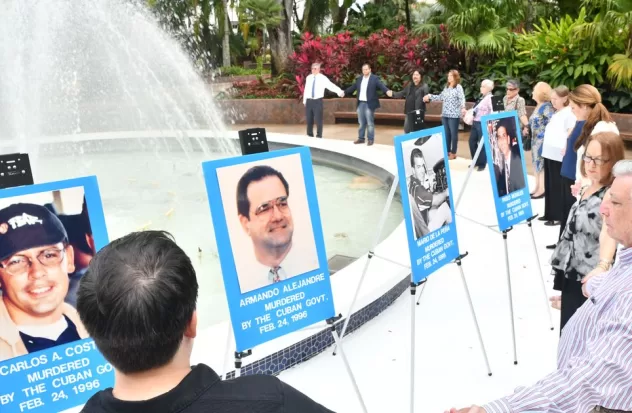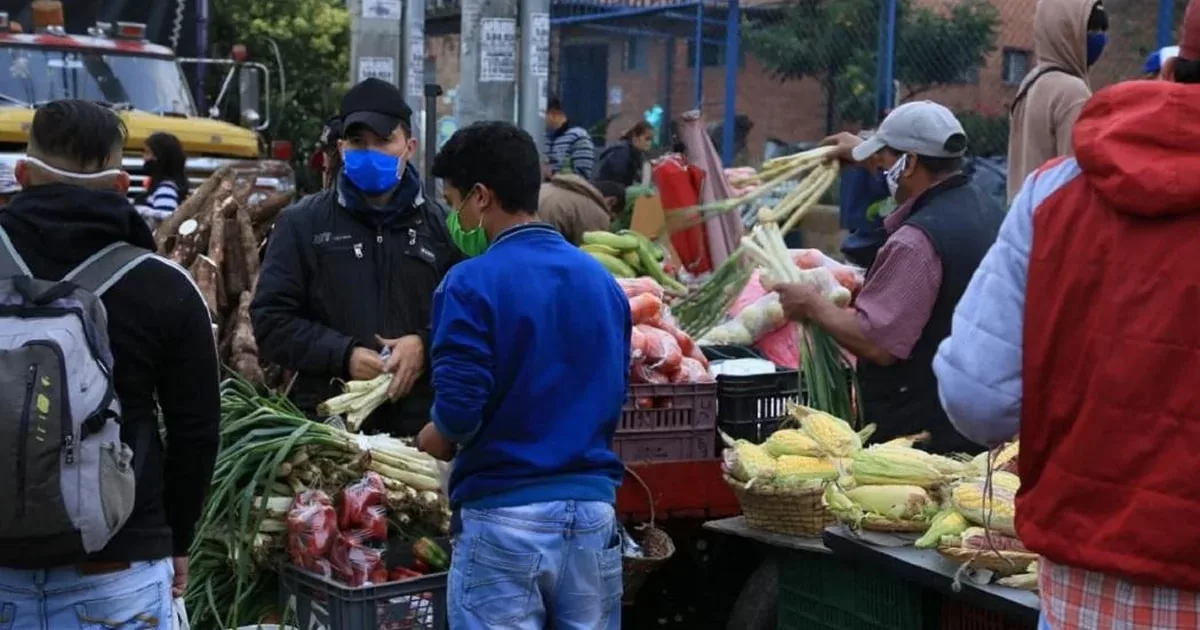On the day of the events, two of the HAR’s Cessna 337 aircraft departed from Opa Locka Airport, in South Florida. Before taking off, the planes notified their flight plans to air traffic controllers in Miami and Havana. Their destination was south of the 24th parallel.
The organization of Aviation International Civil (ICAO) determined that the first of the aircraft was 18 miles and the second 30.5 miles from the Cuban coast.
“The events occurred on February 24, 1996 at 3:21 p.m. and 3:27 p.m., respectively, and in international airspace. The air-to-air missiles fired by the MIG-29 disintegrated the civilian planes, instantly killing Armando Alejandre Jr., 45 years old; Carlos Alberto Costa, 29 years old; Mario Manuel de la Peña, 24 years old; and Pablo Morales, 29 years old,” the ICAO recorded.
The organization reported that only a large layer of oil marked the point where the planes fell: “The Cuban Air Force never notified or warned the civilian planes, did not attempt to use other interception methods and never gave them the opportunity to land.”
A third small plane was also flying that day and managed to escape after an aerial chase of more than an hour. On this aircraft were José Basulto, founder of Hermanos al Rescate, Arnaldo Iglesias and the spouses Andrés and Silvia Iriondo.
Lawyer Carlos Sánchez Berzain, director of the Inter-American Institute for Democracy, based in Miami, emphasizes that the attack on the Hermanos al Rescate planes not only constitutes an illegal action: It was a crime.
“In international law, attacking unarmed civilian small planes with warplanes with premeditation, treachery and cruelty, as happened, is a crime,” he says.
At the same time, he points out that the 28 years that have passed since the attack “demonstrate the criminal nature of a regime that endures and has expanded. It is the Castro regime of Cubawhich has become Castro-Chavism in the 21st century, and which has spread to Venezuela, Bolivia, Nicaragua and which was in Ecuador for more than 10 years with Rafael Correa.”
Current impunity
Sánchez Berzain adds that the argument given at the time by Cuba that the HAR planes were flying over its airspace has no basis to justify the shootdown.
“All these actions are regulated by the system of the aviation, which has two sources. One is that of Civil Aviation, ICAO, and the other is the regulations of the law of war, of interception, even of civil aircraft in the event of war. In the case of Hermanos al Rescate, none of that has been accomplished,” he emphasizes.
The director of the Inter-American Institute for Democracy explains that, if the aircraft were within Cuban airspace, “they would have had to give a radio warning, a visual warning and force the planes to land. They have not fulfilled any of that. They have fired at long range and killed them and, in addition, they have fired missiles. It is a crime that has not been completely clarified. that consecrates the criminality of transnational organized crime that has controlled Cuba for 65 years.”
In his opinion, the impunity in this case is clear.
“Castro, who was the main actor in those deaths, and all the operators, among them the members of the military command, the officers, the pilots and everyone would have to be identified and pursued by international justice tirelessly. As far as I know, the names of the officials of the dictatorship, of the commanders of the level that generated that crime, have not been clarified and published in everything that is that pyramid of command.
Carlos Sánchez Berzain highlights that the pyramid of responsibilities in the crime against the HAR began with Fidel Castro, followed by Raúl Castro, who was in charge of defense, then the commander of the Air Force, of coastal Defense; the military unit and the officers who fired.
“Where are the material authors of the downing of the aircraft? Those people live. The murdered, the pilots, the Brothers to the Rescue, are dead and are heroes. But where are the murderers? “Through which line of command did the order pass and who were its executors?”, he rebukes.
In June 1996, the United Nations Rapporteur for Cuba stated that “the way in which the incidents developed, in particular the circumstance that approximately 6 minutes elapsed between the downing of one small plane and another, clearly indicate that it was not a matter of a reflex action of confused pilots, but there was enough time for them to receive precise orders to act the way they did. The shooting down of these planes was a premeditated act and constitutes a violation of the right to life”.
IACHR report
For its part, in September 1999, the Inter-American Commission on Human Rights (IACHR) indicated that Cuba did not respond to requests for information regarding the admissibility and substance of the matter in the HAR case.
“The Commission, based on an exhaustive analysis of the factual and legal foundations, considers that the complaint meets the formal requirements of admissibility, and concludes that the Cuban State (regime) is responsible for the violation of the rights enshrined in the Declaration “American.”
The IACHR recommended that Cuba carry out an exhaustive investigation “and the prosecution and criminal sanction of those responsible for the various violations established herein, as well as adequate and timely reparation that includes the payment of fair compensatory compensation for the direct relatives of the victims.” .
In the report on the HAR, the IACHR published extracts from the radio communications between MIG-29 and the Military Control Tower in Havana. These communications, the Commission noted, “evidence the violation of all international protocols.” and the impunity with which the Cuban State (regime) committed the crime.”
The Commission recorded that the Cuban Air Force ordered the takeoff of two military aircraft, a MIG-29 and a MIG-23, operating under the control of the Cuban military ground station. “The MIGs carried artillery pieces, short-range missiles, bombs and rockets, and were piloted by members of the Cuban Air Force.”
According to the IACHR, the disproportionality in the use of force was revealed with the use of weapons of war and pilots trained in combat against unarmed civilians.
State terrorism
The claims about impunity have not ceased since the Cuban exile. Lawyer Carlos Sánchez Berzain states that the attack on the HAR sought to generate fear, a practice typical of state terrorism.” “This is how the Cuban dictatorship holds power.”
It explains that State terrorism is configured with “the use of illegitimate methods, commission of crimes by a government, with the purpose of producing fear or terror in the civilian population to achieve its objectives or encourage behaviors that would not occur otherwise.” shape”.
In the recorded testimonies, José Basulto, founder of Brothers to the Rescue, He expressed his conviction that, with the attack on the aircraft in 1996, the Cuban regime was seeking two objectives. “On the one hand, get rid of us, who were sending not only a strong message of solidarity but also hope for the reconquest of freedom and democracy, and, on the other hand, coerce the people of Cuba not to participate in any activity.” of opposition.”
@snederr
Source: OACI/ IACHR / Brothers to the Rescue


